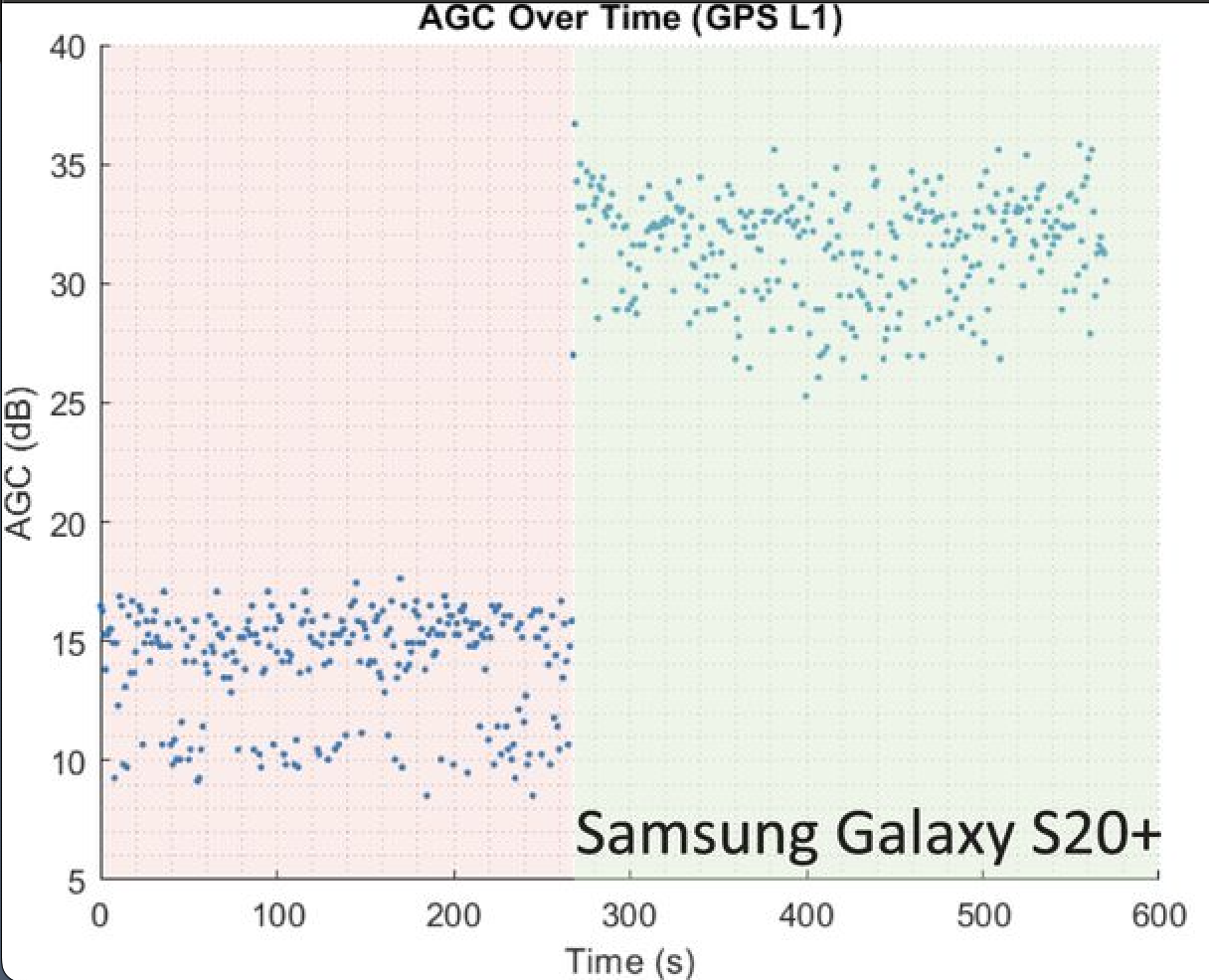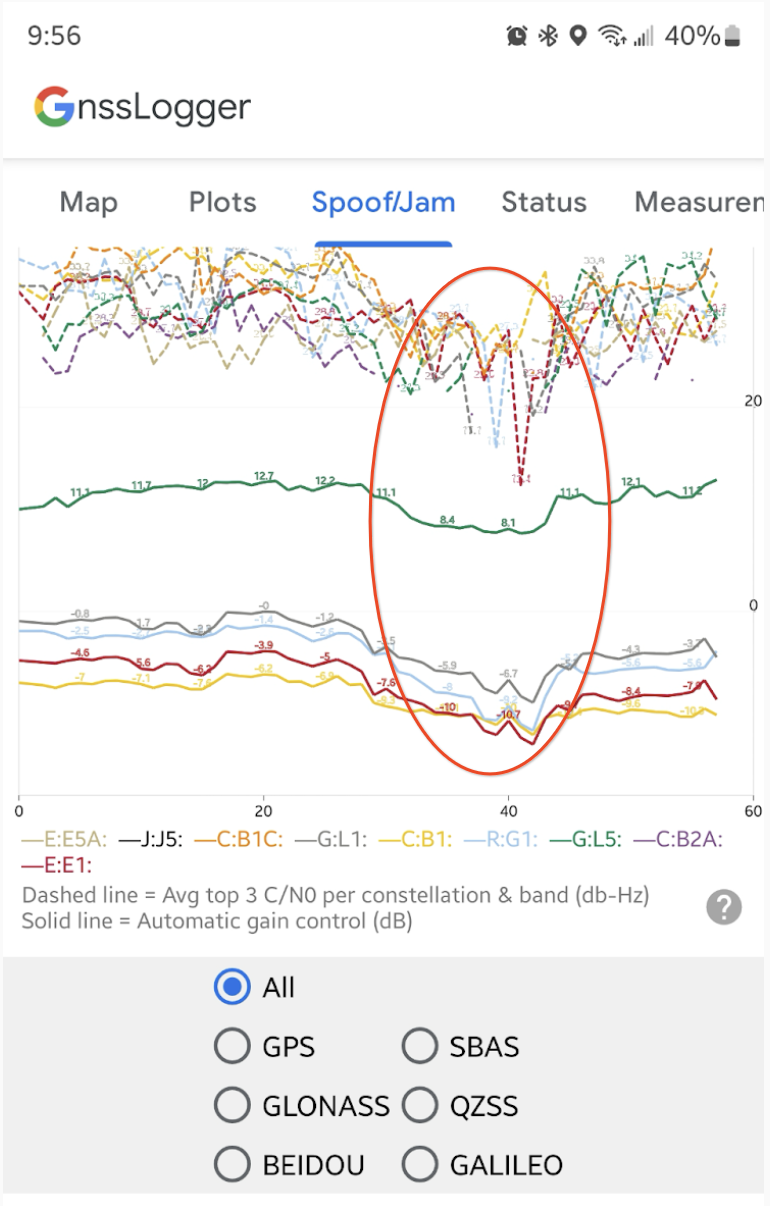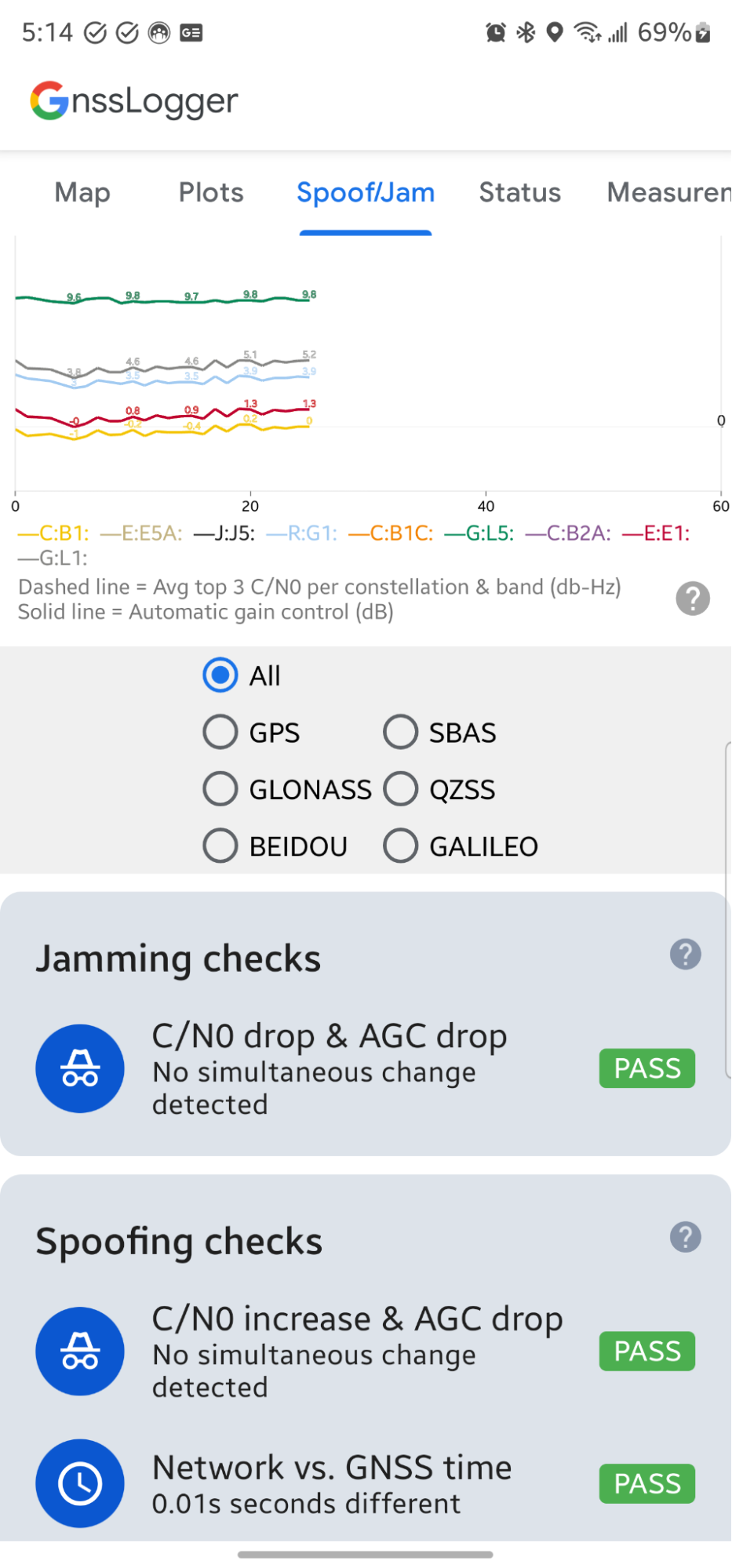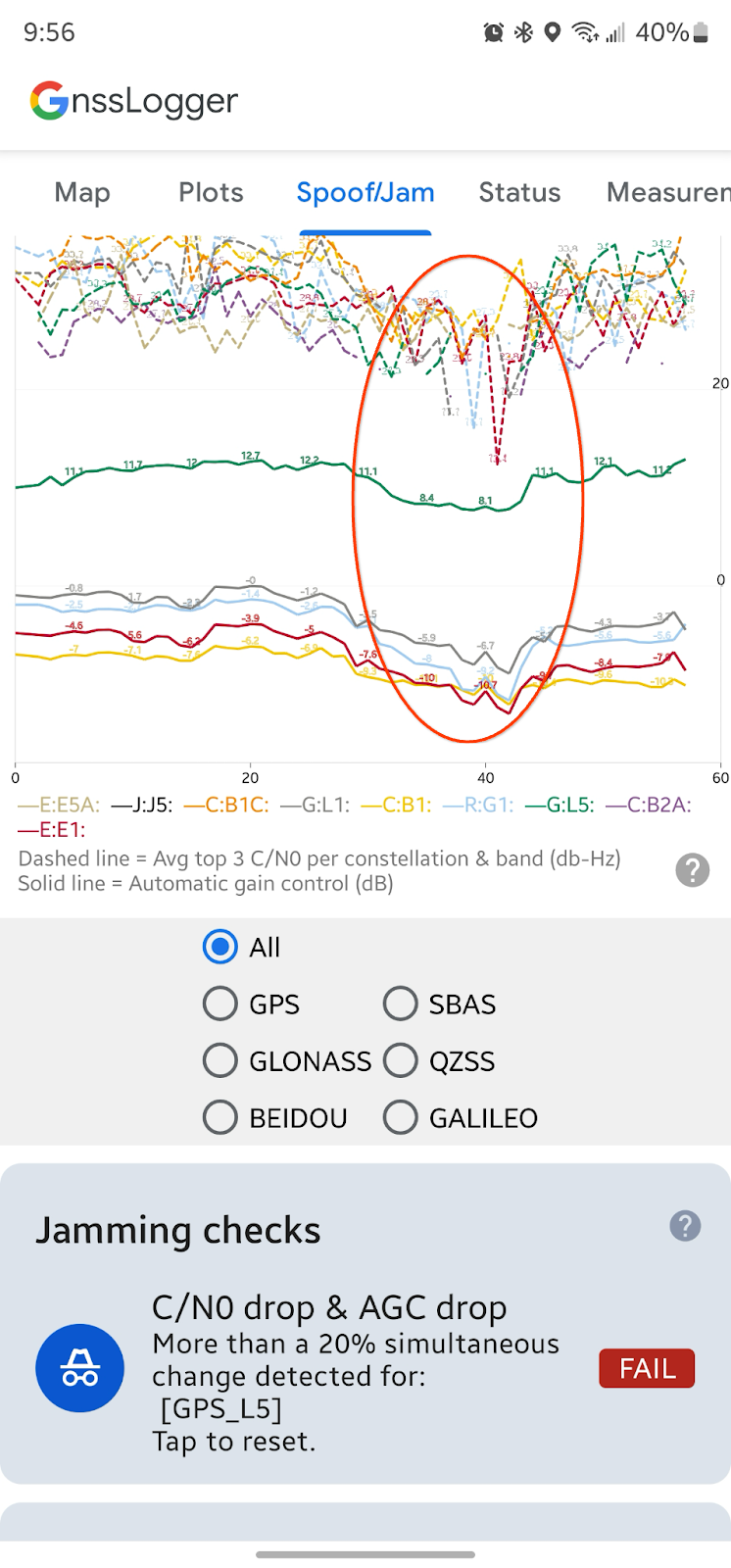GNSS interference can be broken down into the following two categories:
- Jamming
- Spoofing
Jamming attacks involve broadcasting strong radio signals in the same frequency range as GNSS, which can drown out the relatively weaker signals broadcast from the GNSS satellites. This can prevent GNSS receivers, including phones, from computing their location.
Spoofing is a more sophisticated attack during which fake signals that pretend to be real GNSS signals are broadcast. These fake signals can fool a GNSS receiver into computing a position or time that is very different from reality, which is enough to confuse mapping and navigation apps into giving users wrong information.
About GNSS spoofing or jamming
Signal strength, or carrier-to-noise ratio (C/N0), of the signal as well as the automatic gain control (AGC) of the GNSS radio in the phone can be a good indicator of interference.
The AGC tends to dip when spoofing or jamming is observed. When the radio receives strong radio waves, it turns down the gain of the amplifier (AGC) to adjust the power of the received signal.

However, the behavior of C/N0 changes between jamming and spoofing events. For jamming events, the noise observed by the radio is much stronger than normal — therefore, the denominator of the carrier-to-noise ratio increases, and the C/N0 value drops. For spoofing, the reverse happens — because a fake signal is being broadcast that is loud enough to drown out the real signal from the satellite, the overall signal strength is strong, and therefore the C/N0 increases.
Check for GNSS spoofing or jamming
You can use the Spoof/Jam tab in the GnssLogger app to explore the impact of their environment on C/N0 and AGC in real-time.
Real-time AGC and C/N0 plot
The Spoof/Jam tab displays a real-time graph of AGC and C/N0 for each GNSS constellation and band (e.g., "GPS L1" or "G:L1:", "Galileo E5a" or "E:E5A:").

Real-time checks for spoofing and jamming
Below the real-time plot of AGC and C/N0, the app displays a series of automated data checks that identify conditions related to GNSS interference.

In the Jamming checks section, the app checks to see if the average of the most recent 10 epochs of C/N0 and AGC have changed when compared to the previous 50 epochs. If C/N0 and AGC decrease simultaneously, this can be a symptom of GNSS jamming. If this situation is detected, the card shows a FAIL message along with more information:

The first card in the Spoofing checks section also checks C/N0 and AGC, but looks for a simultaneous increase in C/N0 and drop in AGC.
The second spoofing-related check looks for a difference over one second between the GNSS time computed on the device and time retrieved over the Internet from a Network Time Protocol (NTP) server (network time - GNSS time). A large difference can indicate that the computed GNSS time is not valid.
Tips, tricks, and caveats
Here are some things to keep in mind when using the Spoof/Jam feature of GnssLogger:
- This is an experimental feature — as we learn more about the AGC characteristics on various Android devices, the exact algorithms used for spoofing and jamming changes may be updated.
- This feature does not catch all spoofing and jamming — The real-time graph and data checks make it easier to discover data properties in real-time, but aren't robust enough to detect every example of spoofing or jamming.
- This feature is designed to detect a change in C/N0 and AGC — if you open the app in the presence of spoofing or jamming and C/N0 and AGC remain constant, spoofing and jamming are not detected.
- NTP servers are not necessarily secure — Network time can be spoofed as well.
Provide feedback on the Spoof/Jam feature using our public issue tracker.
